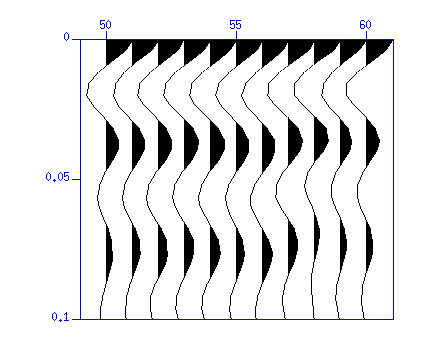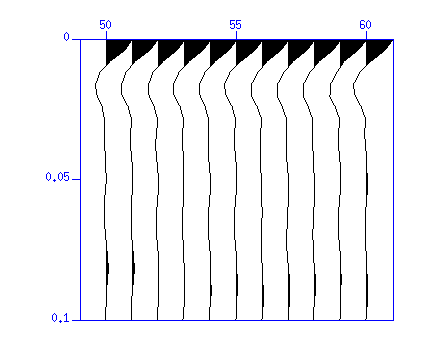Geophysical Exploration of Crustal Structure
Exercise 6: Supplement
Exercise 6
< Supplement
Deconvolution
Following is an example of this instruction. Note that there is no "sample.su" provided.
Display the autocorrelation of "sample.su".
$ suacor < sample.su sym=0 | suxwigb &
The autocorrelation indicates the repetition of about 0.04s second is dominant.
Therefore, to remove the autocorrelation after the second peak,
apply a prediction-error-filter (deconvolution) whose
prediction length is 0.03 seconds.
The autocorrelation after deconvolution shows that the repetitions are
removed.
$ supef minlag=0.03 < sample.su | suacor sym=0 | suxwigb &


Fig: (A portion of) autocorrelation. (Left) Original. The repetition of
about 0.04 seconds is dominant. (Right) After deconvolution.
The repetitions are removed.
Display the autocorrelation of "cdp_1095_flt_gain.su".
$ suacor < cdp_1095_flt_gain.su sym=0 | suxwigb &

Referring the autocorrelation, apply deconvolution using an appropriate
value for 'minlag'.
You will need some trial-and-errors to find an appropriate value by referring
waveforms and autocorrelations.
$ supef minlag=???? < cdp_1095_flt_gain.su | suxwigb &
$ supef minlag=???? < cdp_1095_flt_gain.su | suacor sym=0 | suxwigb &
After deconvolution, a band-pass filter that passs the original passband is required.
$ supef minlag=???? < cdp_1095_flt_gain.su | sufilter f=?,?,?,? amps=0,1,1,0 > cdp_1095_flt_gain_decon.su
Exercise 6
< Supplement
Back
Last modified: Wed Dec 15 11:16:23 JST 2021


